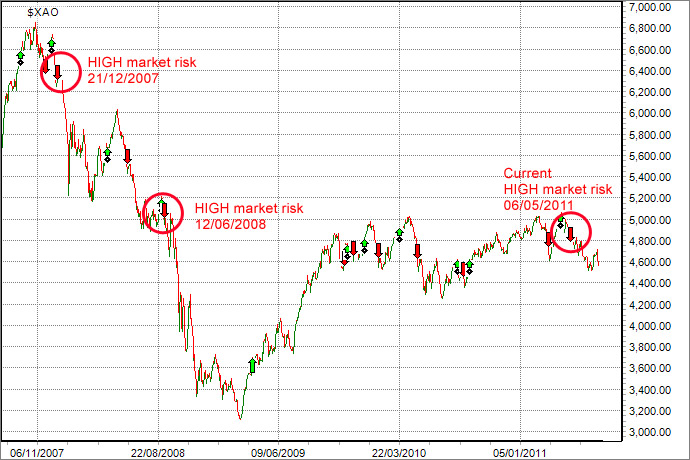Nature has many cycles that are not controlled by mankind. But man’s response to these events can differ greatly in degree and that intensity of degree is determined by how it may or does affect us as individuals. People have difficulty keeping a neutral perspective on an event, regardless of what it is, and hence tend to attach a negative or positive response to the event. The response will vary in degree based on how much energy we give to it and typically depends on how close a connection a person has to the event or their beliefs about the cause of the event.
For example, if a large avalanche is experienced around uninhabited ground, no towns are destroyed or people injured or killed, then it may be viewed as a natural event and little emotion generally is attached.
But take the same magnitude avalanche and move it into the path of a town and you will see a vastly different reaction. The perception of the event would change. It would probably no longer be viewed as a normal cycle of nature rather it would be a catastrophic tragedy. Emotional opinions would be flayed about the supposed cause and how it could have been avoided.
The international economic events of recent years could also be looked upon as a natural disaster which has moved into the path of our cities and towns. Our degree of sensitivity to the event and how much energy we give to taking any action or having an opinion will depend on the affect that it has or may have on us. Whatever your opinion each avalanche can be an opportunity to learn and grow.
So how can private investors protect themselves from future economic avalanches?
There are three fundamental elements I would suggest every investor adopts as part of interacting with the market. They are:
- Planning – Trading Plan
- Timing – knowing the time to expose capital and the time not to
- Risk Management through Money Management – Individual trades and overall portfolio exposure
Planning – Having a Trading Plan
A trading plan contains many other elements that your strategy will not. In essence it is the peripheral tools we need to ensure that we stay on track and stay true to our goals and objectives.
Active investment is a serious activity. It should be treated as a business with the objective of increasing the long term wealth of it’s share holders. Every successful business defines its mission, goals, objectives, strategies and action plan. A trading plan, just like a business plan, must be developed and documented before the business opens it’s doors.
View your trading plan as your contract with yourself of how to execute under pressure according to the rules and guidelines that you committed to prior to engaging the market. Like any commercial contract it must cater for and handle when things go wrong, not just when things go right.
Timing
Timing the market can differ considerably depending on one’s timeframe for investing – short term, medium term or long term – leveraged, buy and hold, day trader etc. But every investor should be prepared to act and act quickly to:
- Reduce portfolio exposure to the market by reducing positions sizes or by removing a portion or all remaining positions from the market.
- Increase exposure to the market by increasing positions sizes in individual trades and the number of simultaneously open trades.
Timing is based around having a strategy to disengage and reengage the market. You will not get it exactly right on every occasion but by using a researched timing approach you should not be caught unawares.
Take for example the recent high market risk signal generated by the SPA3 trading system on the 6th of May 2011.
For over two months SPA3 customers have in some way been reducing their exposure to the market. The level of reduction is a choice made by the investor.
Once a green low market risk signal is triggered, SPA3 customers will once again engage the market or increase exposure by taking larger position sizes in new trades.
Risk and Money Management
What risk is there to manage you may ask? The answer is the risk of drawdown. Whilst drawdown is a certainty, it must be limited according to how much risk YOU are prepared to take. This can all be achieved through disciplined adherence to personalised risk management rules and it must be outlined, in writing, in your trading plan.
Risk Management and Money Management are about:
- Managing risk at the time of entry to a trade and during a trade. Specifically it is about managing the overall risk of your trading capital should the market turn against your open positions.
- Sizing the amount of capital to allocate to the trade based on the probability of success, the risk being taken in the trade.
- Protecting the overall portfolio value by having a trigger or call to action about when you should be fully invested and when you should have far less capital exposed.
Once you have this knowledge, and feel comfortable executing it in the heat of the market, it will come down to working on your skills to execute the plan as flawlessly as you can. It comes down to mistake minimisation. It is a journey that will continue for the rest of your life as you step into a process of incremental and continuous improvement. A bit like life? The market provides a medium second to none for such improvement.




If all the red indicators are High Risk Indicators and the green ‘low market risk’, then arent you being selective in just highlighting the 3
Hi David, you are correct.
The ‘red circles’ highlight the larger falling markets. Customers using SPA3 for marketing timing would have reacted on each of the red and the green signals.